
All prices indicated in US$
A story of love, survival, and passion

I don’t know any audiophile who hasn’t heard of Audio Research. That’s how ingrained the brand is in our hobby, one fundamental reason being that it and, particularly, its late founder Zane (Bill) Johnson were instrumental, in the ‘70s, in building the hobby as we know it. Audio Research is not only one of the most iconic American brands, it remains vital today and continues to push the limits of what’s possible to achieve in audio technology and sound reproduction.
At Munich High End 2022, I had the pleasure of spending quality time with Trent Suggs, who, through his company TWS Enterprises, bought Audio Research in 2020. As I learned during my interview with Trent, the man not only has impeccable business sense, but more so, a deep passion for audio and a love of family—at home and at work.
The following is the first of the three parts that encompass my interview with Trent. No topic was off-limits. Read on, and I guarantee you will learn fascinating facets of both Trent and one of the most enduring and pioneering companies in the history of our hobby.
***
Me: “Trent, some people have told me that your acquisition of Audio Research was a dream come true for you. Tell me how it all started and how you reached that dream.”
“I had just graduated from college and wanted to continue living with my wife in the North Carolina mountains,” Trent said. “The problem is earning a living there isn’t easy. So I started a hi-fi store. It was just my wife and myself, and we grew it to a pretty substantial business. We owned and operated that for almost two decades.
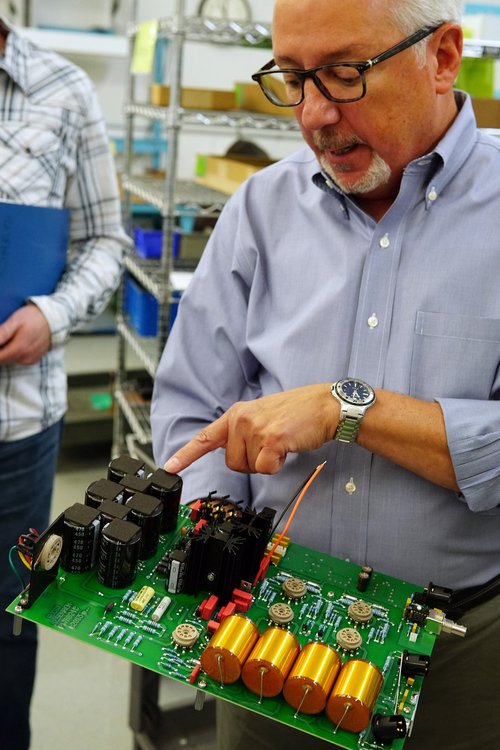
“Then, in 2012, I sold the business and was recruited by distributor Sumiko in Berkeley, California. I worked there for about two and a half years and then Magico approached me. The company was looking for a North American sales director. I accepted, but my stay there was short-lived.
“That’s when Audio Research called me. At the time, the company was part of the Fine Sounds group, which also owned Sumiko. Returning to work for the Fine Sounds family posed a bit of a challenge because it was a very family-oriented company, and once you leave the family, you don’t usually come back. I had to fly to New York for a couple of interviews, and they finally hired me as the North American sales director of Audio Research. I worked there in 2015, 2016, and part of 2017. I immediately fell in love with the company. I loved the corporate culture, the products we were making, the people who worked there. At some point, I made a comment that one day I wanted to buy Audio Research. And then I was fired.”
I gasped. “Fired?”
“In 2017, I was fired from Audio Research. Afterwards, I worked as the North American sales manager at REL Acoustics. I stayed there about a year and a half and became very ill. I took a six-months sabbatical. I didn’t know what I was going to do next. I was just enjoying my time with my wife and family, recovering from my illness.
“Then, out of the blue, I got a call from Jeff Poggi, Audio Research’s CEO. I thought he was calling to offer me my old job back. We were pretty successful in the years I was there, from 2015 to 2017, so I thought he had gone back in time and saw the numbers, and that’s why he wanted me back.
“And then he hit me with a bomb: ‘Do you want to buy Audio Research?’ My initial thought was, no, I don’t want to buy Audio Research.”
At this, I was wondering, why not? Trent had just admitted he had wanted to buy Audio Research one day. It had obviously been a dream of his.
“I didn’t want to move to Minnesota,” he continued. “Plus, I owned my own company for two decades, and it drove me crazy because it was a fairly decent-sized company. We had about 12 employees, but it was a custom integration company—we were at the forefront of home automation—and you had to be on call 24/7. I promised my wife when we sold the business that I’d never own a company again. I wanted less stress and to be a better husband.”
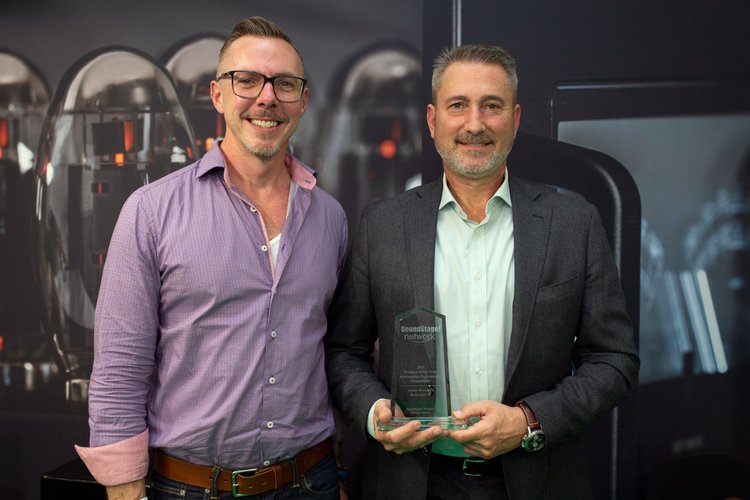
Being an entrepreneur myself, Trent’s words resonated with me. I said, “I know how hard it can be to own a business. It’s something that occupies your mind constantly. It gets exhausting after a while.”
Trent: “Exactly. You lay down, hope to sleep but your mind is trying to solve problems. You go on vacation and your phone always has to be on. You never get a break because you’re the man, right? You’re the responsible party that everybody relies on. So I told Jeff that I would think about it and get back to him in a few days. I then discussed the offer with my wife and family. My wife said, ‘You’ve got to do this’“.
“That’s because she knew you loved the brand,” I said.
“She said, ‘This is the only company you’ve worked for that you’re passionate about since you sold your own company. You need to buy it. You need to move there. I’ll give you two years to get it operational the way you want. And then you’re going to have to come see me more or I’ll come see you.
“I have an amazing wife.” Pause. “Sorry…”
At this instant, Trent was overcome with emotion. A lump formed in his throat and tears pooled in his eyes.
After a long moment of silence, Trent spoke again, only slower this time: “I came 24 hours away from dying, and here, in front of me, I had my wife and family telling me to follow my dream.
“So, after roughly nine months of arduous negotiations, we came to a number both sides thought was fair. On September 16, the transaction happened, and I bought the company. I had already moved to Minnesota two weeks prior and worked at Audio Research to get a lay of the land. I saw lots of familiar faces. Some smiled, some not so much. But once the announcement of the sale came through, I think everybody was happy.
“David Gordon, a pillar of the company for almost 30 years, was still there, and I called Brandon Lauer, who also used to work for Audio Research, and who, like me, was also fired. I wanted him to come back, to the family, and he was all in. He wanted certain things to happen, and so did I. We were very much aligned. David, Brandon, and I had a very clear vision of where this company needed to go.

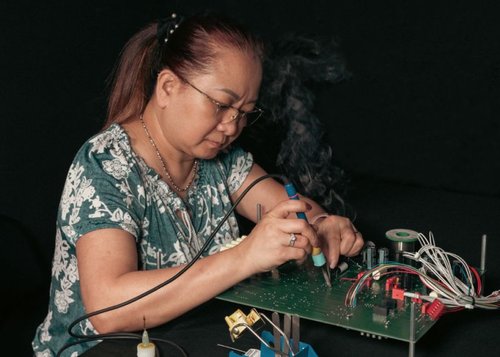
“I want to be clear. This is not a new old Audio Research. This is the new Audio Research. We’re able to initiate designs and freely go in the direction we envision and give customers what they want from Audio Research. We’re a sales company, but we’re also a tremendous service company. We still service virtually every product we’ve ever developed. And this is a 52-year-old company. We still regularly receive SP-3s, a model that was introduced in 1972 and shipped worldwide.”
I asked Trent to tell us a bit about the corporate culture at Audio Research.
“We have a fantastic production team, mostly comprised of women who’ve been with us for over 20 years, some over 30 years. They love their work and they’re very well compensated because they’re professionals.

“Everyone is handsomely paid at Audio Research,” Trent said. “We’ve empowered the employees. We don’t look over their shoulder. They’re there for a reason. I’m not a babysitter, nor do I want to be one. We’ve empowered everybody in the company to own their own position and grow as much as they’re willing to grow in their role in the company. This offers people satisfaction in what they do, not because they’re told to do something, but because they want to do it.
“And we’re vertically integrating the company to the best of our ability. We’ve invested in a paint lab, a very advanced laser machine, a UV printer. We’ve expanded our mechanical engineering department. We also asked our former production manager to come back to work with us. We have a new purchasing manager. Everyone has their role in the company. No one has to oversee anyone. It’s a beautiful thing. It’s organic. I feel comfortable not going to the office.”
“That’s a great thing,” I said.
“Yeah, and it’s a great thing for me and my family. It’s a really good situation all around. The winters, on the other hand, are a little different. It’s very cold in Minnesota.”
Me: I saw a video on YouTube, a tour of your factory, and I was impressed to see that everything is hand-built. All your circuit boards, the resistors, capacitors, connectors, tube holders, and wires are all soldered by hand. It’s not the most efficient way to do things and it must add a lot to production costs. Why do you keep doing things this way?”
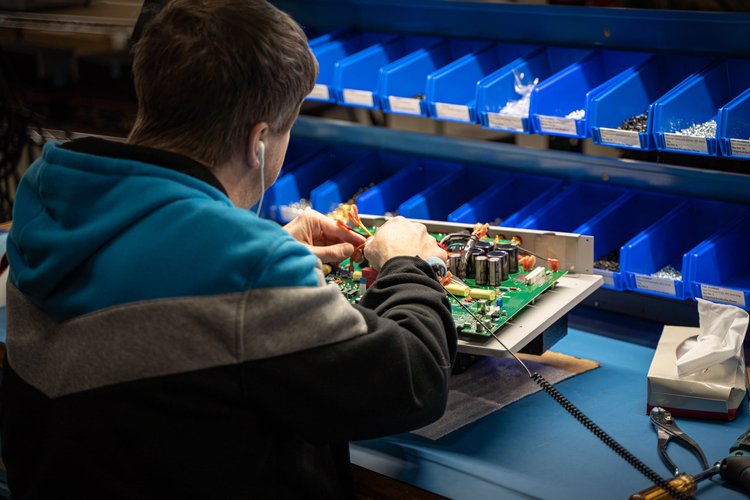
“Every product we have is developed by Warren Gehl, and every one is developed with sonics in mind,” Trent said. “Believe me, if we could buy a wave soldering machine and run our boards through that and still maintain the sonic level Audio Research is known for, I would do it in a second. There’s no shortage of circuit board houses in Minnesota, and if I outsourced to them, it would reduce our overhead and increase profits dramatically. But it just doesn’t sound as good. Even the orientation of a resistor in a circuit influences the sound.
“It’s one of the reasons it takes us so long to develop new products, because we just don’t change a few parts in a model and call it a Reference 7. There has to be significant changes in the sound quality that will contribute to a better listening experience, otherwise it just won’t happen. We typically develop new products every five to six years. This is how long it takes our engineering department to find the right parts, the right orientations for those parts, to improve the new product’s transparency and sound quality.
“Our products are expensive, but when you consider what we do and how we build things, these products represent an incredible value. That’s fine for financially stable people. But our goal is to initiate the younger audience. We’ve seen a giant resurgence with the younger crowd. Vinyl is one reason, streaming is another, and now they’re getting away from those crappy little earbuds.
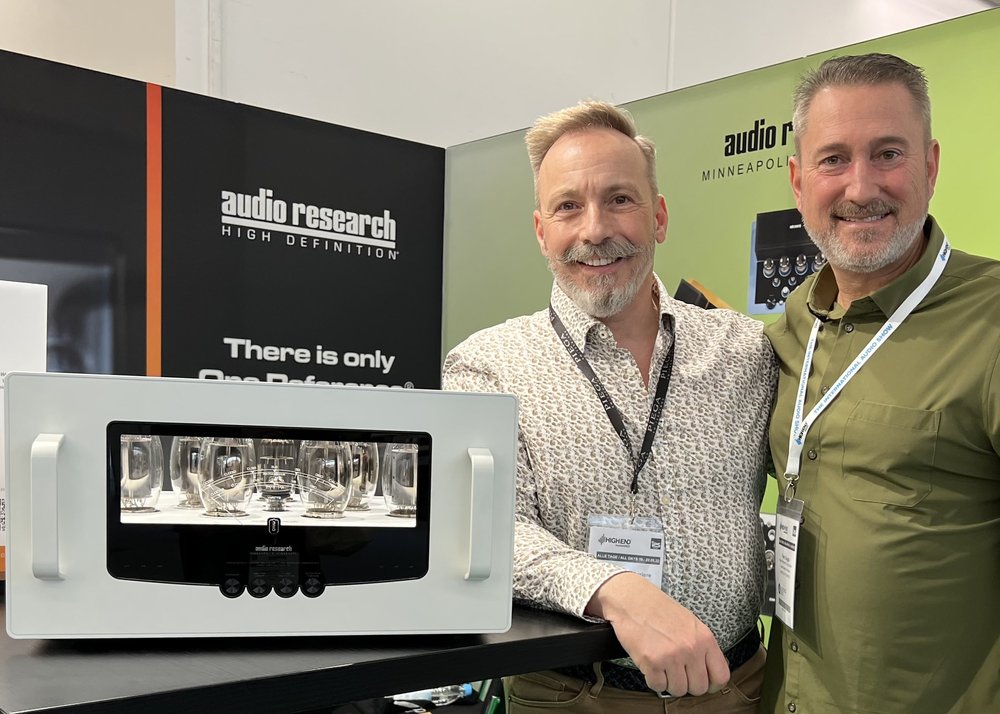
Do you think the audio industry is dying? I asked Trent.
“Oh, gosh, no,” he said. “If anything, there’s a giant resurgence.”
And I thought only the old baby boomers like me were still interested in hi-fi.
“You’re mostly right,” said Trent. “Typically, historically, our customer has been 60 plus years old, obviously financially successful, and that’s fine. But why should twenty- or thirty-year-olds with less money be prevented from owning an Audio Research product? The answer was that we had to create a product whose essential circuits would be assembled by hand, it would deliver the Audio Research sound, and it would retail in that $5,000 range. It’s still fairly expensive, but it had to have the hand-built quality of an Audio Research product. If we could capture that customer with good service, with build quality, with responsiveness, with great sound, why would the customer ever deviate and go with another brand as they move up in their professional career? If we don’t give them a reason to go anywhere else, they’re going to stay with us. When they turn 40, maybe they’ll get a Foundation series product, then later, when they’re more comfortable financially, they might upgrade to the Reference series.”
Hence, the introduction of the company’s I/50 integrated amplifier. What was the response to it so far?
“It’s been wildly successful, and I thank everyone in the world for being patient with us. We are consistently backordered at least 400 units. It’s a blessing and a curse. I think one of the reasons the l/50 is proving this successful is because although it may be less expensive than our other products, it has the Audio Research standards of quality. Our designer, Warren Gehl, has final say on the sonics of all our products. Nothing leaves the factory without his final approval.”

Does Warren work alone?
“There’s a big team,” said Trent. “We also have an apprentice working under Warren because Warren is getting a little older. His name is Evan Skucius and we’re fortunate to have him because he has extraordinary hearing. He’s been working for Warren for almost a year, so when Warren is ready to retire, we won’t miss a beat.
“In fact, our entire engineering department, which is about seven to eight people strong, has really good hearing. Dave Gordon’s hearing is wonderful. Brandon Lauer is a great listener and a great setup person. I have pretty good hearing, but I’ve surrounded myself with people better than me.
“The I/50 is a product that’s been necessary for Audio Research for a long time. In the early 2000s, we had a preamplifier in the $3,000 range. Well, it wasn’t profitable enough. So some European sellers kept increasing its price to where it became only aspirational. I thought, ‘let’s wrangle this back in.’
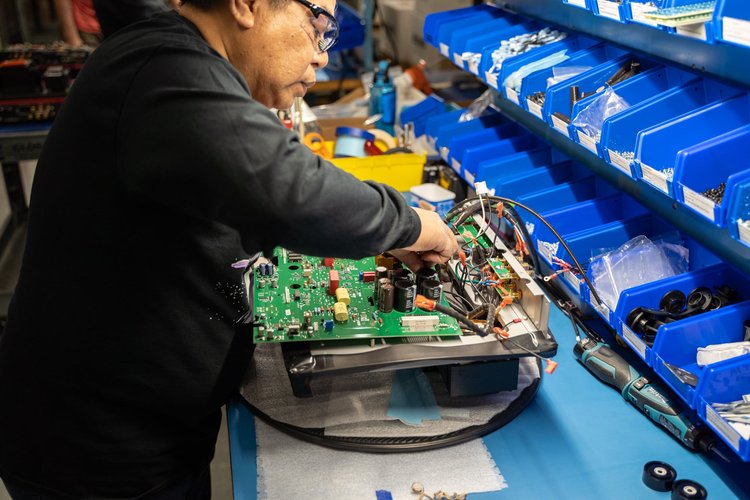
“Frankly, the I/50 should be priced higher than it is. We’re working hard to maintain that $5000 price point, even when shipping costs have increased by 30%, tubes are subject to a 35% import tax, and Homeland Security charges us a 25% embargo tax on every shipment that comes from outside the US, and which has to be paid within ten days. It’s unbelievable!
“The 50 series was an idea I came up with years ago. The first product in that series is the I/50, a 50Wpc integrated amp with optional phono stage. And the DAC card for that product should be available at the end of this summer. The DAC card will increase our sales. Not that we need to increase sales, but a DAC is certainly the way the younger generation listens to music. And, with the resurgence of vinyl, why not include a phono stage? The l/50 is a labor of love and by far one of the most difficult products to develop because we want it to be able to include a preamplifier, an amplifier, a phono stage, and a DAC in one box that we’re trying to keep under $6,000.
“We’re very excited about the l/50. We offer six different finishes because we’ve invested in our own paint lab and painter. If we didn’t, it would have been an inventory nightmare trying to figure out how many pieces of this or that color we would need to keep in stock to meet demand.
“Soon, we’ll add another product to the 50 series—the P/50, a preamplifier with an optional MM/MC phono stage that will be a bit more advanced than the l/50’s. Then will come the A/50, a 50Wpc amplifier that can output 100Wpc bridged. So, the idea is, a young customer starts out with an I/50. A few years later, he opts for separates and buys a P/50 and an A/50. Years later, he moves into a new home, where his listening room is bigger, so he buys bigger speakers. He buys a second A/50 and finds himself with one 100Wpc monoblock for the right speaker and one for the left. He now has 100Wpc monoblocks from Audio Research. The preliminary retail price for the P/50 will be between $4000 to $4500, and $4995 for the A/50. Do you see what I’m getting at? We’re getting back into affordable separates from Audio Research that will give similar performance to that of a LS28SE, or a Reference 6, or even a Reference Phono 10 or a Reference 10 preamp. As the customer moves up, the sonics improve as they should because price levels increase. So we’re very excited about that.
“When we discuss the development of a new product, it’s a blank page and we throw out ideas. If, during our design discussions, we determine that a feature is important to people, why not do it? The company motto is not why do it, but why not? Does the device have a DAC? Yes. DSP? Yes. Does it have Bluetooth? Yes. These are important features to people. If we can do it, let’s say yes. Let’s try to give people what they want. And this way of thinking has been very positive with our dealer distributor network and, obviously, with the end user, because now we’re opening up Audio Research to a much larger demographic.”
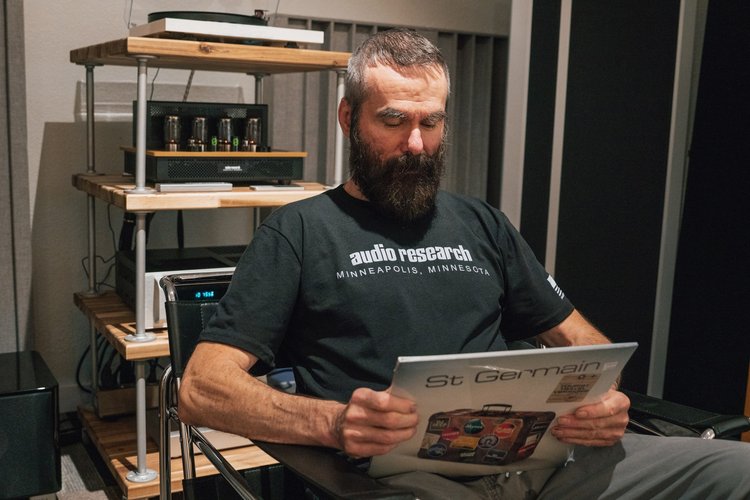
During my visit to High End Munich 2022, I was struck by how increasingly expensive demoed products had become. I wondered if, to some extent, this wasn’t a sign that the audio market was declining, and to compensate for lower sales, manufacturers were resorting to selling more extravagant products with higher profit margins. I asked Trent what he thought of this trend of making hi-fi products less and less accessible to people.
“There are a couple of problems in the industry,” he said. “One, there are simply too many brands now, and let’s be frank, very few are viable. I don’t want to downplay anyone, but this situation creates confusion for the consumer. If I want to buy a product and there are 1000 different choices, which one do I pick? But here’s the good news I see in the industry. When I attended Axpona 2022 in Chicago, I saw a much more diverse demographic than I’ve seen at any show since 2012. I saw couples, not just single men. I also saw a younger population—teenagers and people in their twenties. I think they understand, more than ever, what can be experienced with quality audio.”
Was the MP3-earbuds generation finally coming around?
“Absolutely! They’re abandoning crappy buds for better headphones and better electronics. I think the global lockdown from Covid-19 played an important role for our industry. It caused people to listen to music more at home, and couples to spend more time together. I learned how to cook with my wife. It sort of forced us to become better people, and better life companions. It’s why, I think, there were so many couples at Axpona. It was refreshing to see. And then there’s the younger population. We had a very nice room at Axpona with Quintessence Audio Video, with a very expensive setup. A young man visited every day to listen to music for about twenty minutes. Could this young man afford to buy this system? Likely not, but it made no difference. He got the bug. Now he’s in our industry. That’s why it’s so important for us as a manufacturer to build less expensive products—as gateway products.
“Every l/50 is auditioned before it ever ships,” Trent said. “Every repaired service unit has to go through Evan or Warren. If these two guys do not sign off on that product, it goes back to Quality Assurance (QA). They will tell them what they hear and how to fix this or effectively point them in the right direction. And then it goes back to QA and it might sit there for an hour or a week until it is absolutely perfect before they send it back to either Evan or Warren, because they know if it isn’t perfect, it’s just going to be declined again. So let’s do it right the first time. That sort of QA has been an intrinsic part of Audio Research culture. It’s what we’ve done for decades. Why would we deviate from something so effective?
“I would invite you, and anyone else, to come visit our factory to see how we operate. Everyone who tours the factory understands our philosophy better afterwards.
“I discovered something remarkable when I worked at Audio Research between 2015 and 2017. I’d never seen anything like it. And that’s the loyalty customers had to the brand. They didn’t deviate. Typically, a customer owned a Reference 5 preamp and as soon as the 5 SE came out, they’d go to that model, and then the Reference 6 would come out, and they’d go to that model. And I thought, ‘The company must be doing something right!’. It’s one of the reasons I was so passionate about the brand, and why, with the l/50, I wanted to capture that love of the brand earlier in people’s lives.”


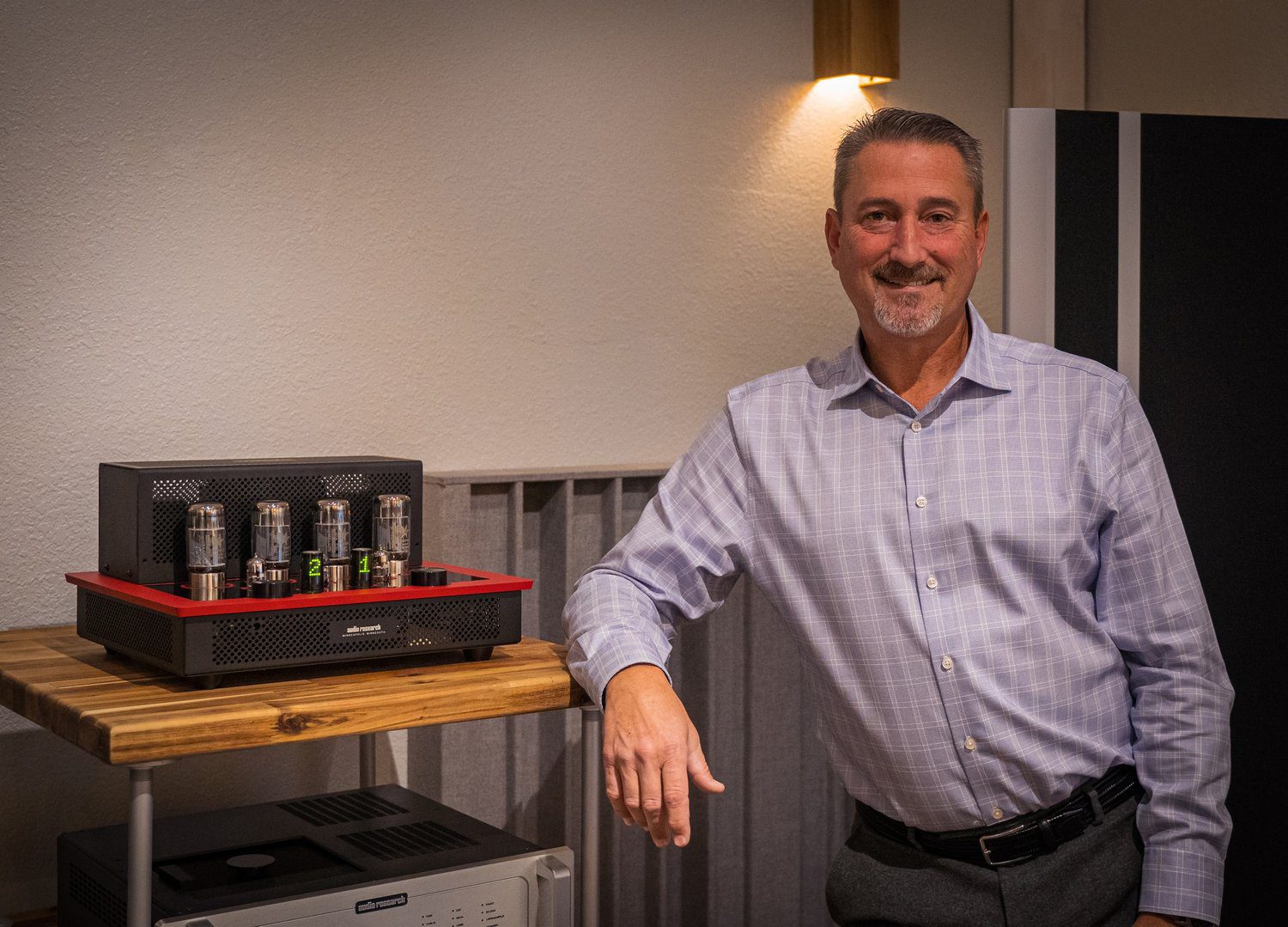













Leave a Reply